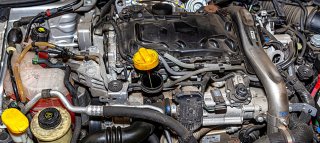Tire Tread
People who frequently drive are aware that during the process of operating a vehicle, there is a noticeable sound due to the friction between the tires and the road surface.
This phenomenon, known as road noise, is considered normal and unavoidable. However, the design of the tread groove on tires can have a direct impact on the level of tire noise experienced, which in turn affects the driving experience and overall comfort.
The tread pattern on a tire serves multiple purposes, including increasing friction between the tire and the road, reducing tire noise to enhance comfort, dissipating heat and water, improving vehicle handling, and enhancing visual aesthetics. Different tire patterns exhibit varying performance characteristics.
One type of tire pattern is the longitudinal tread pattern, which features tread grooves aligned in the same direction as the tire rotation. These grooves form one or more continuous circles around the tire tread.
Longitudinal pattern tires offer several advantages such as low rolling resistance, reduced noise levels, improved comfort, and excellent drainage performance. However, they may have slightly weaker driving force and braking performance compared to other tread pattern types.
Generally, these tires exhibit good front-end directionality, making them suitable for urban roads and high-speed driving. They are commonly used on family cars and high-speed buses.
Another type is the transverse tread pattern, where the tread grooves are designed in a transverse direction perpendicular to the tire's circumferential direction. These tires lack longitudinal tread patterns.
The main advantage of transverse tread tires is their large contact area with the road, resulting in excellent braking and driving force. However, they have some drawbacks such as poor drainage, increased tire noise, higher wear rate, elevated fuel consumption, and reduced performance in terms of speed and handling.
This tire pattern is primarily utilized in large trucks and construction machinery, with minimal presence in the civilian market.
Using different tread patterns on the front and rear tires can significantly impact the vehicle. As the tread patterns differ, the grip of the tires will vary during driving, leading to imbalanced weight distribution and potential loss of vehicle stability.
Additionally, varying tread patterns can cause certain tires to have poor water conductivity, posing a significant risk when driving in rainy conditions. Therefore, it is highly recommended to use tires with the same tread pattern. Different tread patterns can create imbalances in tire grip, potentially compromising safety.
Furthermore, the differences in tread patterns affect the hydrodynamic characteristics of the tires, which can be hazardous during wet conditions. It is advisable to opt for tires with consistent tread patterns whenever possible.
Tire noise arises from three main sources. First, the air in the grooves of the tire tread gets compressed as the wheels rotate, creating a noise similar to air explosions.
Second, tire noise can result from the vibration of the carcass and tread portion. Harder tire materials tend to amplify this type of noise. Lastly, the noise of tire tread blocks hitting the ground contributes to overall tire noise levels.
To address tire noise, manufacturers often employ special tread designs, groove configurations, and structural adjustments in the production of silent tires. These modifications aim to reduce noise caused by air compression, tire vibration, and the impact of tread blocks on the road surface.
The tread groove design is a crucial factor in tire noise reduction. Different tread patterns offer varying performance characteristics and suitability for specific driving conditions.
Selecting tires with the same tread pattern is highly recommended to ensure balanced grip and safe driving. Tire noise can be mitigated through specialized tread designs and structural adjustments, resulting in a more comfortable and enjoyable driving experience.
You may like:



